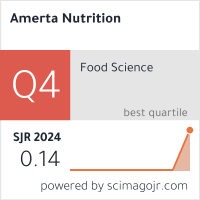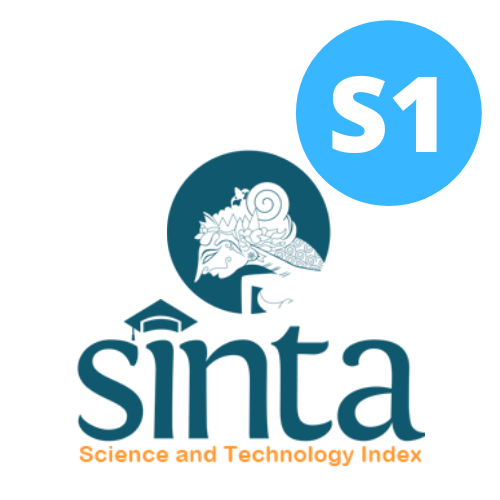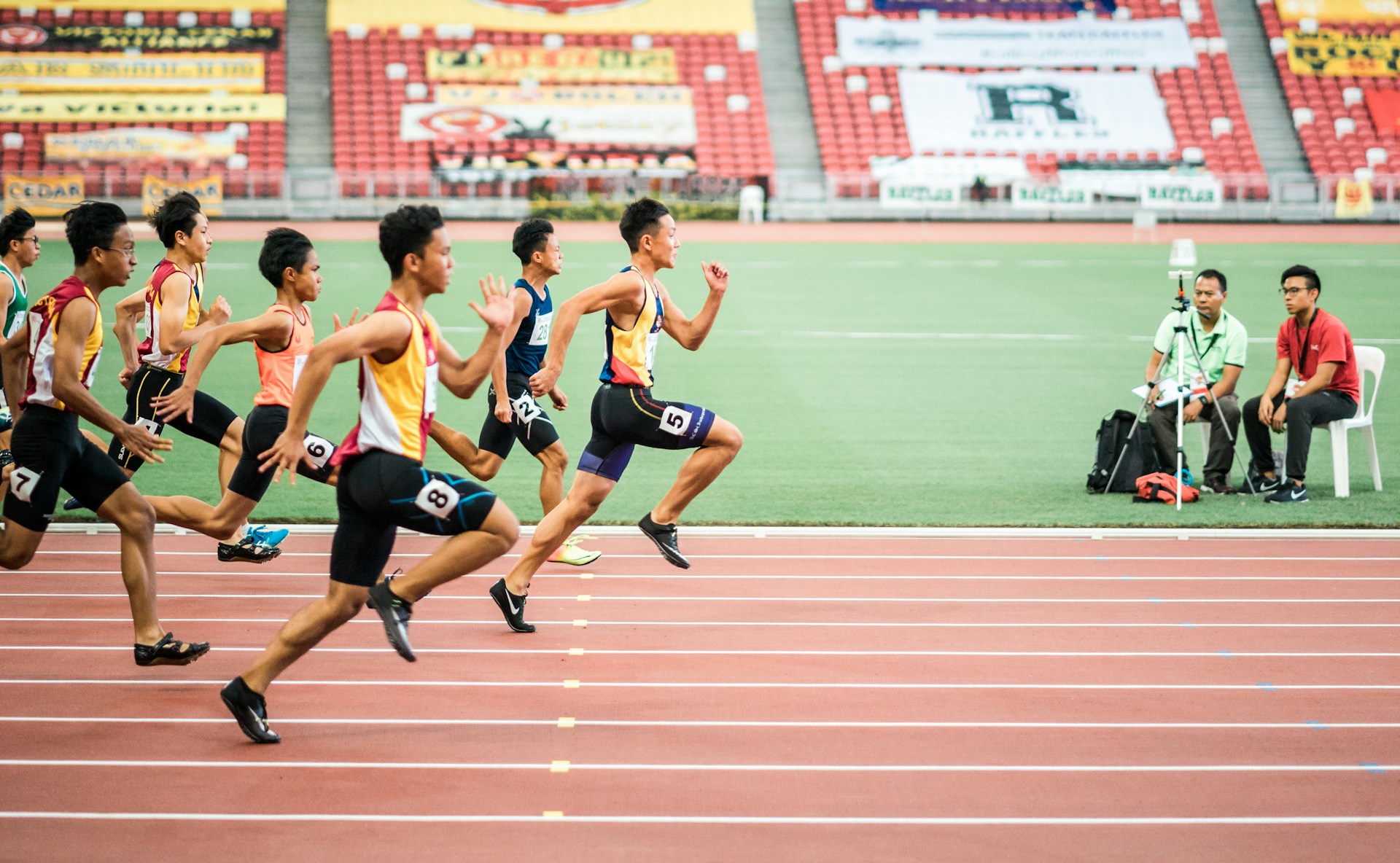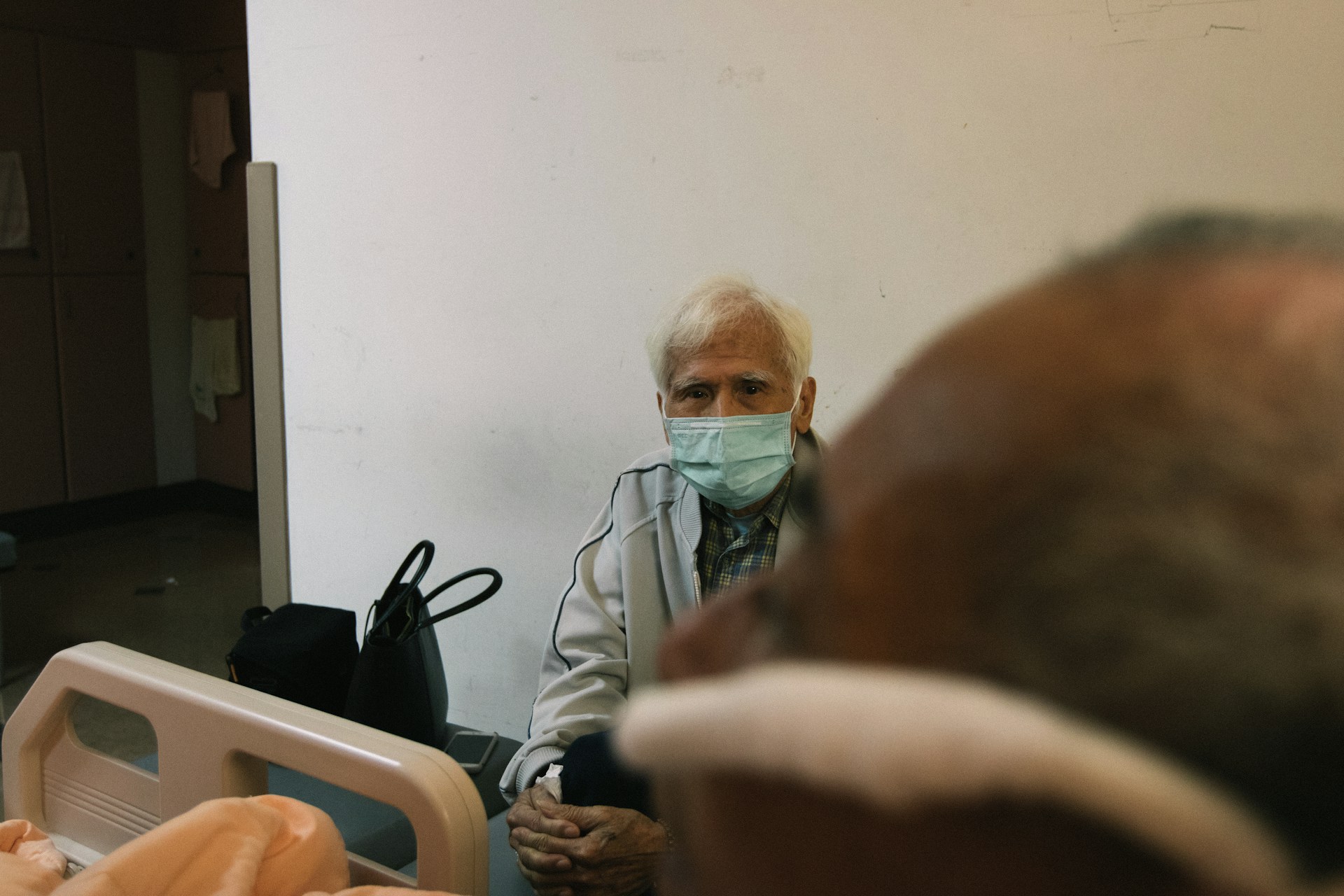A Critical Empirical Analysis of the Influence of Nutritional Status and Physical Activity Patterns on Height of Indian Youth
Analisis Empiris Kritis Pengaruh Status Gizi dan Pola Aktivitas Fisik terhadap Tinggi Badan Remaja India
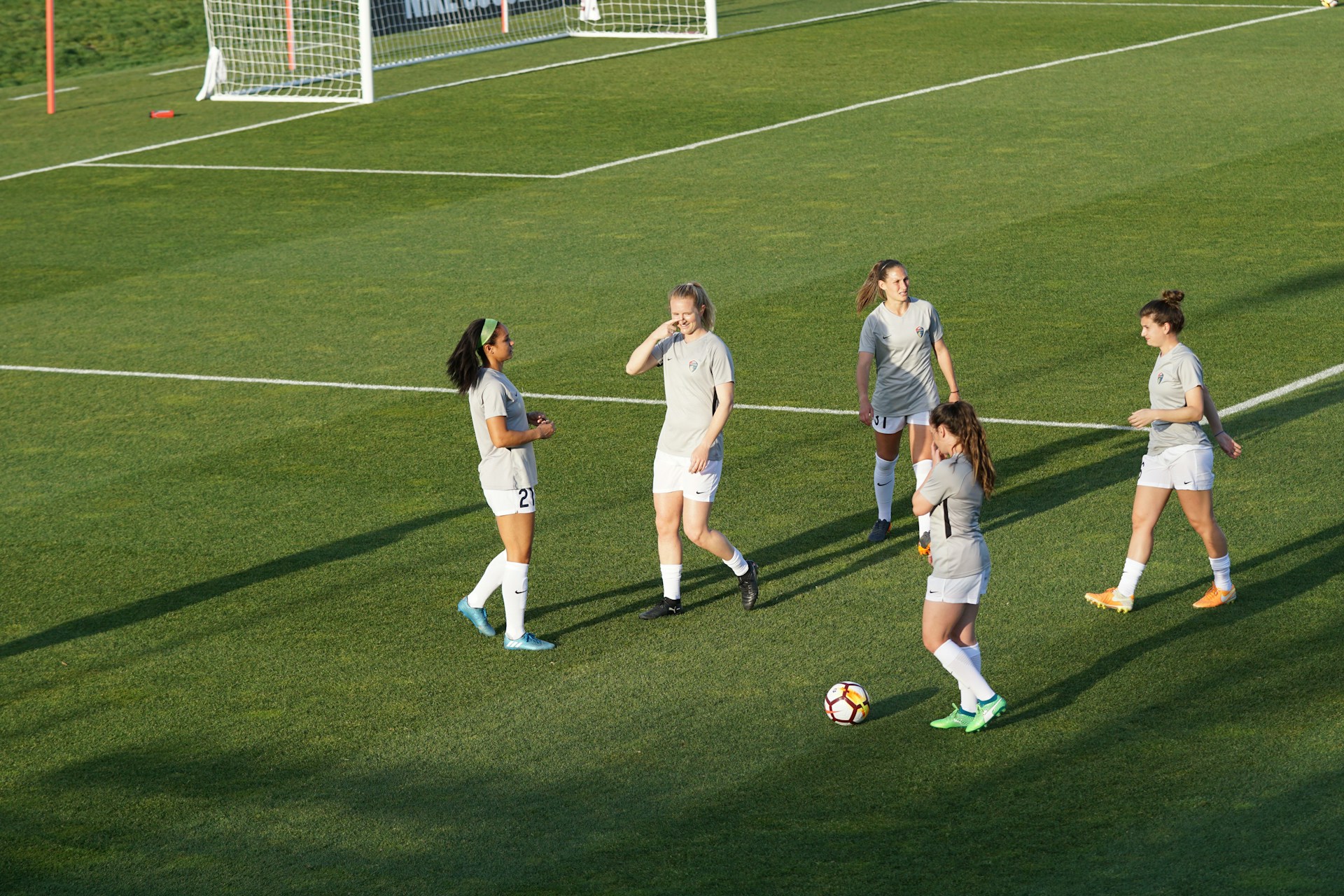
Background: Recent research indicates a global trend of increasing average height, while in contrast, the average height in India is experiencing a concerning decline. Although genetic factors account for 60-80% of an individual's final height, environmental and social factors significantly influence it.
Objectives: The study objective was to analyze the height of the adults belong to Kerala and Tamil Nadu and its associated determinant factors.
Methods: Multi stage sampling method was adopted to identify study samples from two southern districts of India namely Tamil Nadu and Kerala. Different households were randomly selected from the chosen urban areas based on the convenience sampling technique, as per the framed inclusion criteria and included 100 male and female in the age group of 18 to 25 years. A well-structured questionnaire was used to elicit the socio economic, dietary habits, physical activity pattern and anthropometric measurements of the selected samples. SPSS software was used to analyze the data. Pearson Correlation Coefficient and Anova were used to interpret the determining factors.
Results: Pearson’s correlation coefficient analysis (R=0.557, p-value=0.001) and Anova (F=144.8 and p-value<0.001) showed the positive significant relationship between nutritional status and height of the participants and moderate (R=0.311, p-value<0.001), but statistically significant positive relationship between physical activity level and height.
Conclusions: The study highlights alarming trends in nutritional status and physical activity among young adults, with both factors showing a significant association with individual height. Addressing these issues is crucial for improving height outcomes in future generations.
Stevens, G. A. et al. Trends in mild, moderate, and severe stunting and underweight, and progress towards MDG 1 in 141 developing countries: a systematic analysis of population representative data. Lancet Lond. Engl. 380, 824–834 (2012). DOI: 10.1016/S0140-6736(12)60647-3.
Paciorek, C. J., Stevens, G. A., Finucane, M. M. & Ezzati, M. Children’s height and weight in rural and urban populations in low-income and middle-income countries: a systematic analysis of population-representative data. Lancet Glob. Health 1, e300–e309 (2013). DOI: 10.1016/S2214-109X(13)70109-8.
Mamidi, R. S., Kulkarni, B. & Singh, A. Secular Trends in Height in Different States of India in Relation to Socioeconomic Characteristics and Dietary Intakes. Food Nutr. Bull. 32, 23–34 (2011). DOI: 10.1177/15648265110320010.
Roy, K. et al. Assessment of under nutrition with composite index of anthropometric failure (CIAF) among under-five children in a rural area of West Bengal, India. Int. J. Contemp. Pediatr. 5, 1651 (2018). DOI: 10.18203/2349-3291.ijcp20182583.
Saavedra, J. M. & Prentice, A. M. Nutrition in school-age children: a rationale for revisiting priorities. Nutr. Rev. 81, 823–843 (2023). DOI: 10.1093/nutrit/nuac089.
Grasgruber, P., Cacek, J., Kalina, T. & Sebera, M. The role of nutrition and genetics as key determinants of the positive height trend. Econ. Hum. Biol. 15, 81–100 (2014). DOI: 10.1016/j.ehb.2014.07.002.
Mori, H. Secular Changes in Relative Height of Children in Japan, South Korea and Taiwan: Is “Genetics” the Key Determinant? Am. J. Biomed. Sci. Res. 4, 473–485 (2019). DOI: 10.34297/AJBSR.2019.04.000857.
Baten, J. & Blum, M. Why are you tall while others are short? Agricultural production and other proximate determinants of global heights. Eur. Rev. Econ. Hist. 18, 144–165 (2014). DOI: 10.1093/ereh/heu003.
Ministry of Health and Family Welfare. National FAmily Health Survey (NFHS 5) 2019-21. https://mohfw.gov.in/sites/default/files/NFHS-5_Phase-II_0.pdf.
Nita Sharma Das, N. Trends of Adult Height in India Using National Family Health Survey Data: A Systematic Review. Int. J. Health Care Nurs. 2, 62–70 (2023). DOI: 10.55938/ijhcn.v2i1.41.
Choudhary, K. K., Das, S. & Ghodajkar, P. Trends of adult height in India from 1998 to 2015: Evidence from the National Family and Health Survey. PLOS ONE 16, e0255676 (2021). DOI: 10.1371/journal.pone.0255676.
Kim, R., Kumar Pathak, P., Tripathi, N. & Subramanian, S. V. Heterogeneity in adult anthropometry by socioeconomic factors: Indian National Family Health Survey 2006 and 2016. Eur. J. Clin. Nutr. 74, 953–960 (2020). DOI: 10.1038/s41430-019-0511-0.
Blum, M. Cultural and Genetic Influences on the “Biological Standard of Living”. Hist. Methods J. Quant. Interdiscip. Hist. 46, 19–30 (2013). DOI: 10.1080/01615440.2012.703952.
John, A. T. et al. Factors influencing household pulse consumption in India: A multilevel model analysis. Glob. Food Secur. 29, 100534 (2021). 10.1016/j.gfs.2021.100534.
NCD Risk Factor Collaboration (NCD-RisC). A century of trends in adult human height. eLife 5, e13410 (2016).
Som, S., Ulijaszek, S., Pal, M., Bharati, S. & Bharati, P. Variation in height and BMI of adult indians. J. Biosoc. Sci. 46, 47–65 (2014). DOI: 10.1017/S002193201300014X.
Thulaseedharan, J. V. et al. Consumption of fruits, vegetables and salt in the context of control of type 2 diabetes and hypertension in Kerala, India. J. Fam. Med. Prim. Care 10, 2646–2654 (2021). DOI: 10.4103/jfmpc.jfmpc_2469_20.
Mason-D’Croz, D. et al. Gaps between fruit and vegetable production, demand, and recommended consumption at global and national levels: an integrated modelling study. Lancet Planet. Health 3, e318–e329 (2019).DOI: 10.1016/S2542-5196(19)30095-6.
ICMR. Assessment of Visible Fat Comsumption among Urban Population in 7 Metro Cities in India: National Nutriiton Monitoring Bureau Urban Nutrition Surveys (2015-16). https://www.nin.res.in/survey_reports/Fat_study_report_part-2.pdf.
Katapally, T. R. et al. Results from India’s 2016 Report Card on Physical Activity for Children and Youth. J. Phys. Act. Health 13, S176–S182 (2016). DOI: 10.1123/jpah.2016-0393.
Birzniece, V. Exercise and the growth hormone–insulin-like growth factor axis. Curr. Opin. Endocr. Metab. Res. 9, 1–7 (2019) DOI: 10.1016/j.coemr.2019.04.006.
TWC India Edit Team. National Institute of Nutrition Changes Average Weight, Height Measurements for Indian Men and Women. The Times of India (2020). https://weather.com/en-IN/india/health/news/2020-09-29-national-institute-of-nutrition-changes-ideal-weight-height-for.
Rascoe, A. S., Peng, E. J., Ferrell, D., Copp, J. A. & Liu, R. W. The Relationship Between Height and Income with Potential Application to Treatment of Limb Length Discrepancy. Cureus (2024) DOI: 10.7759/cureus.56331.
Copyright (c) 2025 Amerta Nutrition

This work is licensed under a Creative Commons Attribution-ShareAlike 4.0 International License.
AMERTA NUTR by Unair is licensed under a Creative Commons Attribution-ShareAlike 4.0 International License.
1. The journal allows the author to hold the copyright of the article without restrictions.
2. The journal allows the author(s) to retain publishing rights without restrictions
3. The legal formal aspect of journal publication accessibility refers to Creative Commons Attribution Share-Alike (CC BY-SA).
4. The Creative Commons Attribution Share-Alike (CC BY-SA) license allows re-distribution and re-use of a licensed work on the conditions that the creator is appropriately credited and that any derivative work is made available under "the same, similar or a compatible license”. Other than the conditions mentioned above, the editorial board is not responsible for copyright violation.






